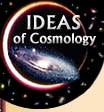
|
|
 |
Who
Was Edmond Halley? |

|
|
|
Edmond Halley Edmond Halley (sometimes "Edmund," 1656-1743) studied at Oxford University, but left before graduating, to observe stars for a year in the southern hemisphere. After his return to England, Halley was active in the new Royal Society of London. There he helped his friend Isaac Newton with his work on gravity and the writing of the Principia, and even paid for the book's publication. Halley is famous in his own right for analyzing the orbits of comets, which he showed to be elliptical and periodic. Halley's Comet returned, as he predicted, in 1758, 15 years after his death. (The comet last appeared in 1986, and next will appear in 2061.) Halley's discovery of stellar motion, though less well known than his comet, was no less an achievement. No longer were the stars believed fixed, either to an outer sphere or in space. At the age of 63, Halley was appointed the Astronomer Royal, a position he held until his death. |
|
Copyright ©. Brought to you by the Center for History of Physics, a Division of the American Institute of Physics |
|
|||||